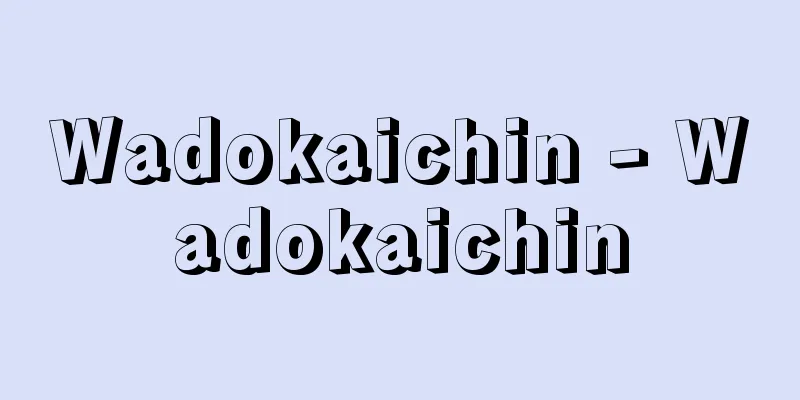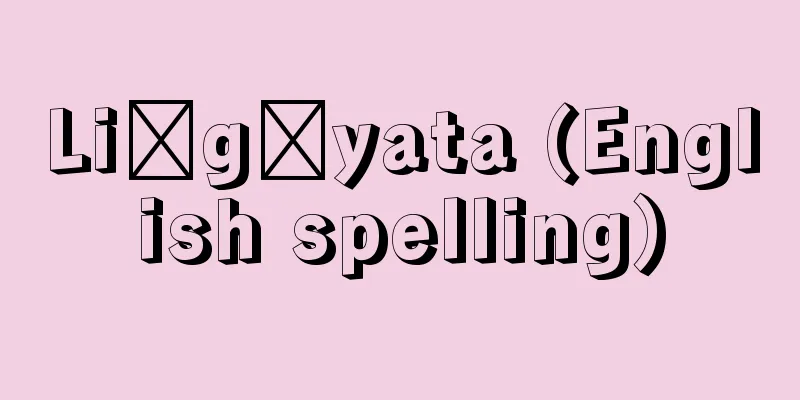Wadokaichin - Wadokaichin

|
It is an ancient Japanese currency that was produced after the Fuhonsen coin. In May of the first year of Wadō (708), when construction of Heijō-kyō began, minting of silver coins began, and in August of the same year, minting of copper coins began (Shoku Nihongi, May 11, August 10, of the same year). There was a debate as to whether “Wado” was an era name or an auspicious word, but it is highly likely that the auspicious word (Wado) was chosen because it is easy to pronounce, with the era name in mind. There was also a debate as to whether “Kaichin” should be read as “Kaichin” or “Kaihou,” but this is a difference in whether “chin” is an abbreviation of “chin” or “treasure.” Both are the same character for “chinpo,” and there is no significant difference in meaning. As a result of progress in research into the use of characters in the Nara period, the “kaichin” theory has become more popular. Silver coins were abolished in August of the second year of Wadō (709). Japan's ancient coins were managed by an office called the "senji," and this system was established when the minting of the Wado-kaichin coins began. The first senji was established in Kawachi (Osaka Prefecture), and it is highly likely that local government offices with copper casting techniques, such as Omi Province, Harima Province, and Dazaifu, also cooperated in the minting of coins. In addition, the "saisenji" was established as an agency to supervise and urge the minting of coins. The size and location of the senji changed after that, and senji in Nagato, Suo, and other areas are known. The Suo senji site in Sue, Yamaguchi City, Yamaguchi Prefecture, and the Kamo senji site in Kamo Town, Kyoto Prefecture have been excavated. When the minting of the Wado-kaichin coins began, not only was this national system established, but many policies were implemented to promote the circulation of the coins, such as using them to pay for labor and establishing the Law on the Conferment of Ranks on Saved Coins. Another characteristic of the Wado-kaichin coins is that there are many examples of them being excavated. Although they were often used for religious purposes, they were also valued as circulating currency and are thought to have played an important role in the history of ancient Japanese currency. Source: Encyclopaedia Britannica Concise Encyclopedia About Encyclopaedia Britannica Concise Encyclopedia Information |
|
日本古代の貨幣で,富本銭に続いて製作されたもの。平城京の造営を開始した和銅1(708)年の 5月に銀銭,同 8月に銅銭の鋳造を開始した(『続日本紀』同年 5月11日,8月10日条)。「和同」は年号か吉祥語かの論争があったが,年号を意識して発音が通じる吉祥語(和同)が選ばれた可能性が高い。「開珎」の読みは「かいちん」か「かいほう」かの論争もあったが,これは「珎」を「珍」の略字とみるか「寶(宝)」の略字とみるかの違いである。いずれも「珍宝」の一字であり,意味に大差はない。奈良時代の文字の用法の研究が進んだ結果,「かいちん」説が有力となっている。なお銀銭は和銅2(709)年8月に廃止された。日本の古代銭貨は鋳銭司という役所が担当したが,このような仕組みは,和同開珎の鋳造開始とともに整えられたものである。鋳銭司が最初に置かれた場所は河内(大阪府)であり,近江国や播磨国,大宰府など鋳銅技術をもつ地方の官司も鋳銭に協力した可能性が高い。また鋳銭を監督,督促する機関として催鋳銭司が置かれた。その後,鋳銭司の規模や場所は変化し,長門,周防ほかの鋳銭司が知られている。遺跡としては,山口県山口市鋳銭司・陶(すえ)で周防鋳銭司遺跡が,京都府加茂町で加茂銭司遺跡が発掘調査された。和同開珎の鋳造開始時に,このような国家的な仕組みが整えられただけでなく,その流通を盛んとするため,労役の支払いに使用したり,蓄銭叙位令を定めたりするなど,多くの政策が実施された。また和同開珎は,発掘例が多いことが一つの特色である。それらは宗教的な使用も少なくないが,流通貨幣としても評価されるものであり,日本の古代貨幣史において大きな役割を果たしたと考えられる。
出典 ブリタニカ国際大百科事典 小項目事典ブリタニカ国際大百科事典 小項目事典について 情報 |
Recommend
Academie des Beaux Arts - Academie des Beaux Arts
Please see the French Academy of Arts page. Sourc...
Litmus paper
Litmus test paper is a test paper soaked in a lit...
Osaka swelling - Osakabare
...This period coincides with the time when the J...
Solomon Bochner
1899‐1982 A Polish mathematician born in Krakow, h...
Koketsu - Koketsu
It is the name given to tie-dyeing in the Nara pe...
Cadbury, G. - Cadbury
…However, the planning orientation of the plan, s...
Pulp - Parupu (English spelling) pulp
It is an aggregate of cellulose fibers extracted ...
Finnish School
A school of folklore. It is based on the methodolo...
Erysiphe
…The outer surface of the ascus has branches call...
Promulsis
…Romans generally had bread and cheese for breakf...
Shori
A person who cooperates with government politics ...
International administrative law
Generally, it refers to treaties on the administra...
Oppenheimer, F. - Oppenheimer is here!
...In short, with the beginning of this kind of o...
Wehner, H.
...After Orenhauer's death in 1963, West Berl...
SR - SHAKURITAKUION,SHAKURIDUKUION
Acronym for Shake Reduction. A unique image stabil...









